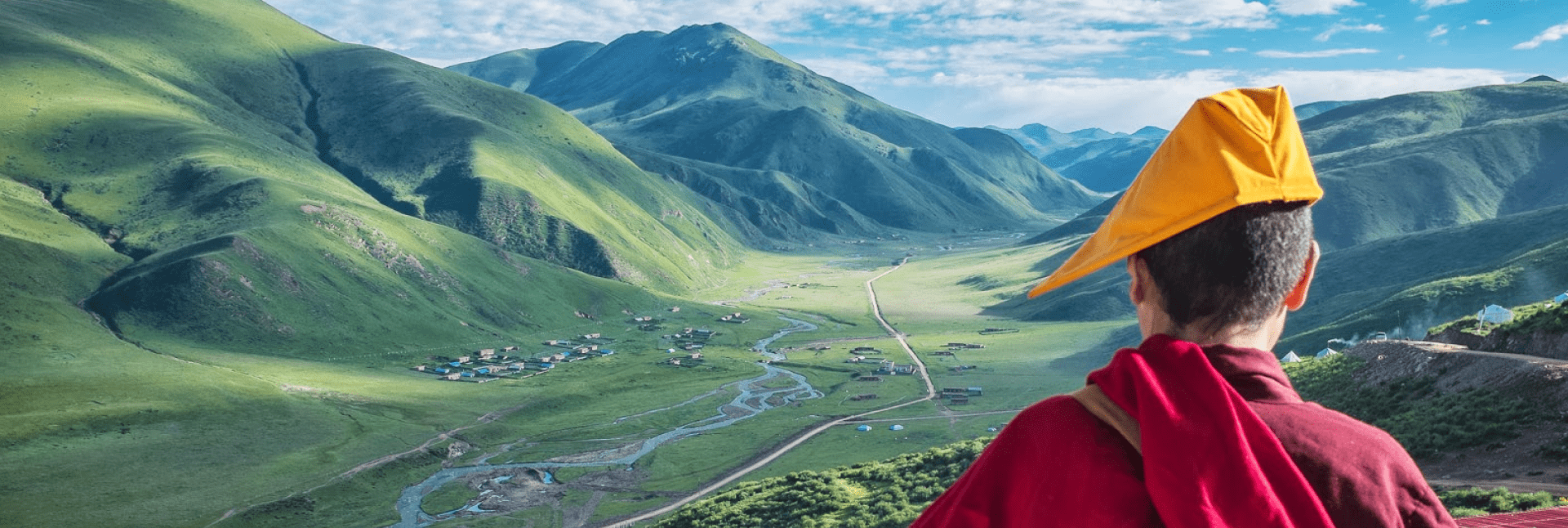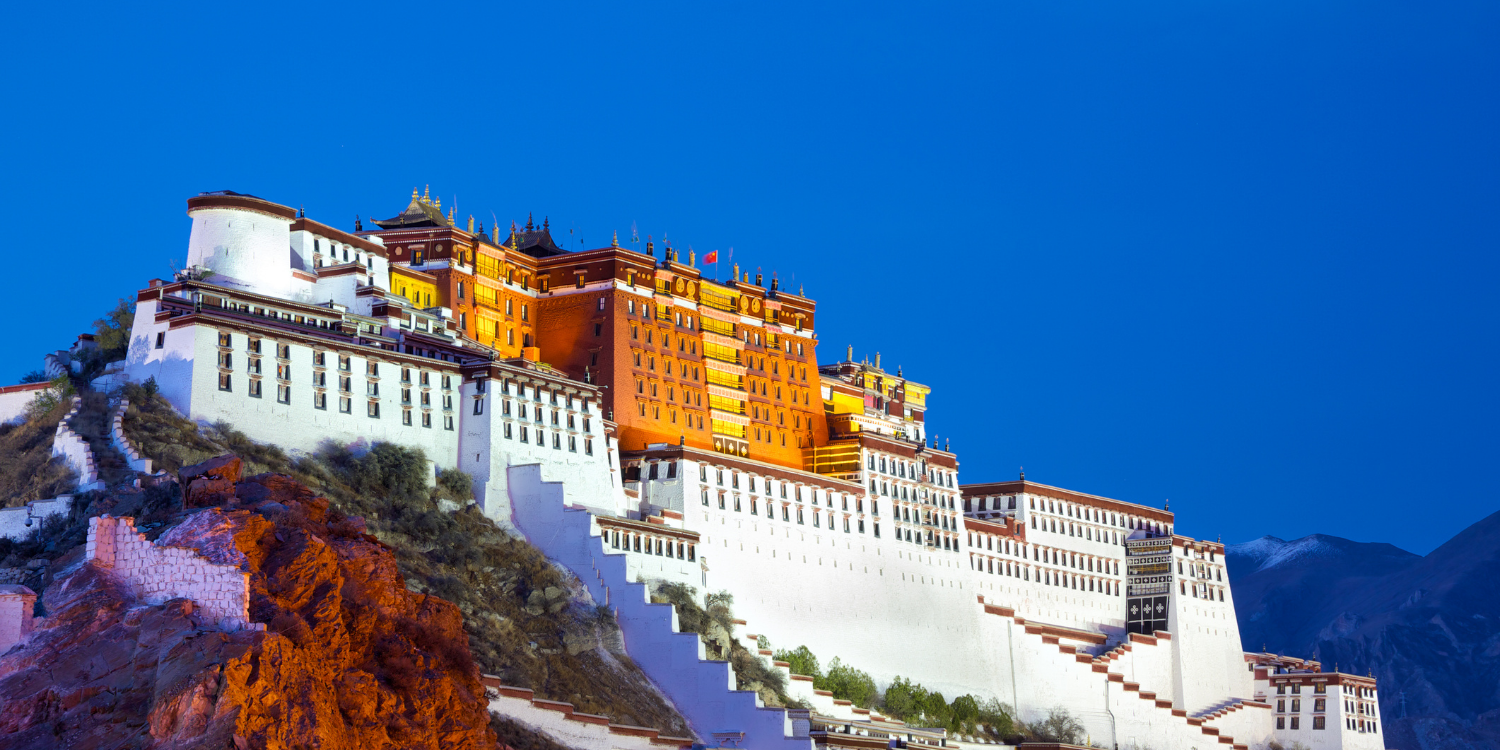
IS TIBET A COUNTRY?
The Chinese government justifies its occupation by claiming that Tibet has been part of China for around 800 years. Its claim is not supported by the facts.

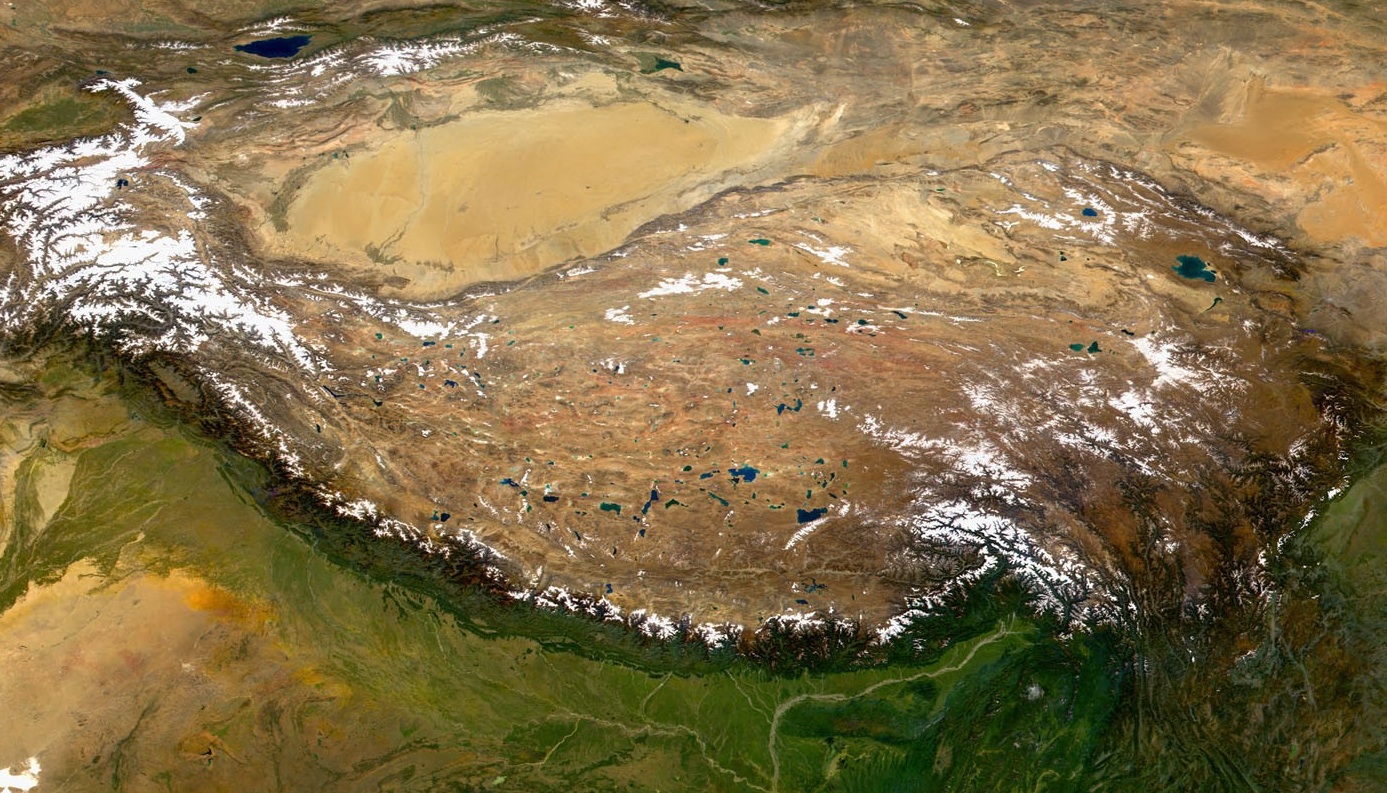
Tibet is located to the southwest of China, also bordering India, Nepal, Myanmar (Burma) and Bhutan.
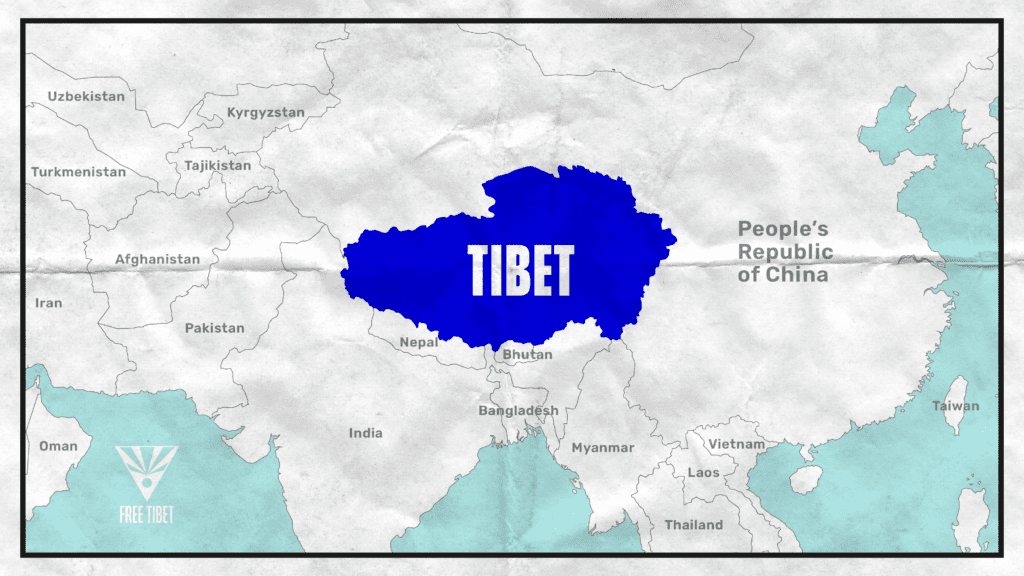
Tibet’s three original provinces are U-Tsang, Kham and Amdo. The people in these regions all consider themselves Tibetan, although each has a strong identity and different dialects of Tibetan are used.
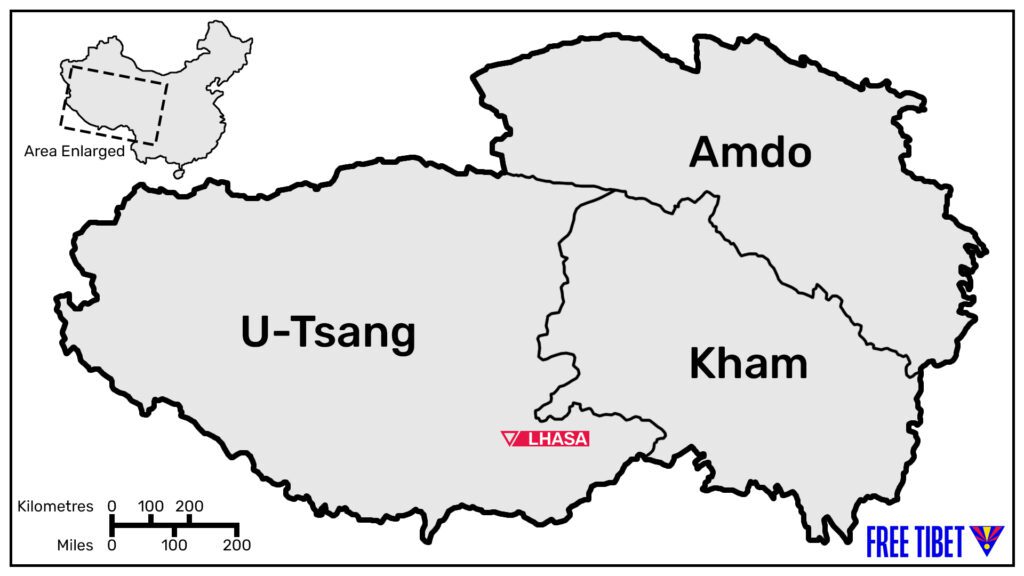
Map of Tibet showing its three original provinces.
Under China’s occupation, Tibet has been divided up, renamed and incorporated into Chinese provinces, with little reference to the original borders between Tibet’s provinces. When China refers to Tibet, it means the Tibet Autonomous Region or TAR, which includes only U-Tsang and part of Kham. The remainder of Kham was divided between Sichuan and Yunnan Chinese provinces. Amdo was divided between Gansu, Sichuan and Qinghai provinces.
The historical territory of Tibet would make it the world’s 10th largest nation by geographical area.
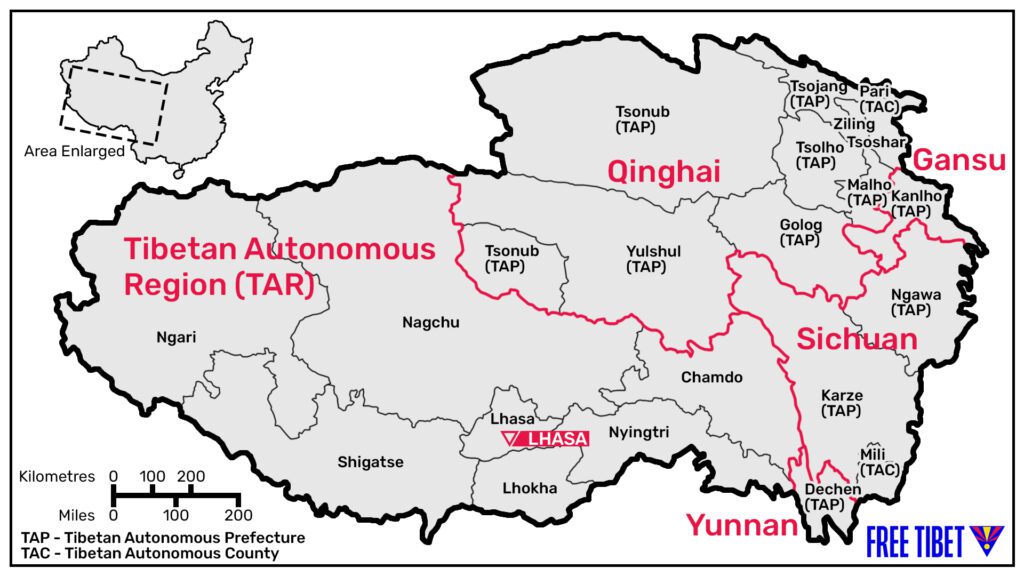
Today’s Tibet under occupation: only part of historic Tibet is included in the TAR and other areas have become regions of China.

The Chinese government justifies its occupation by claiming that Tibet has been part of China for around 800 years. Its claim is not supported by the facts.
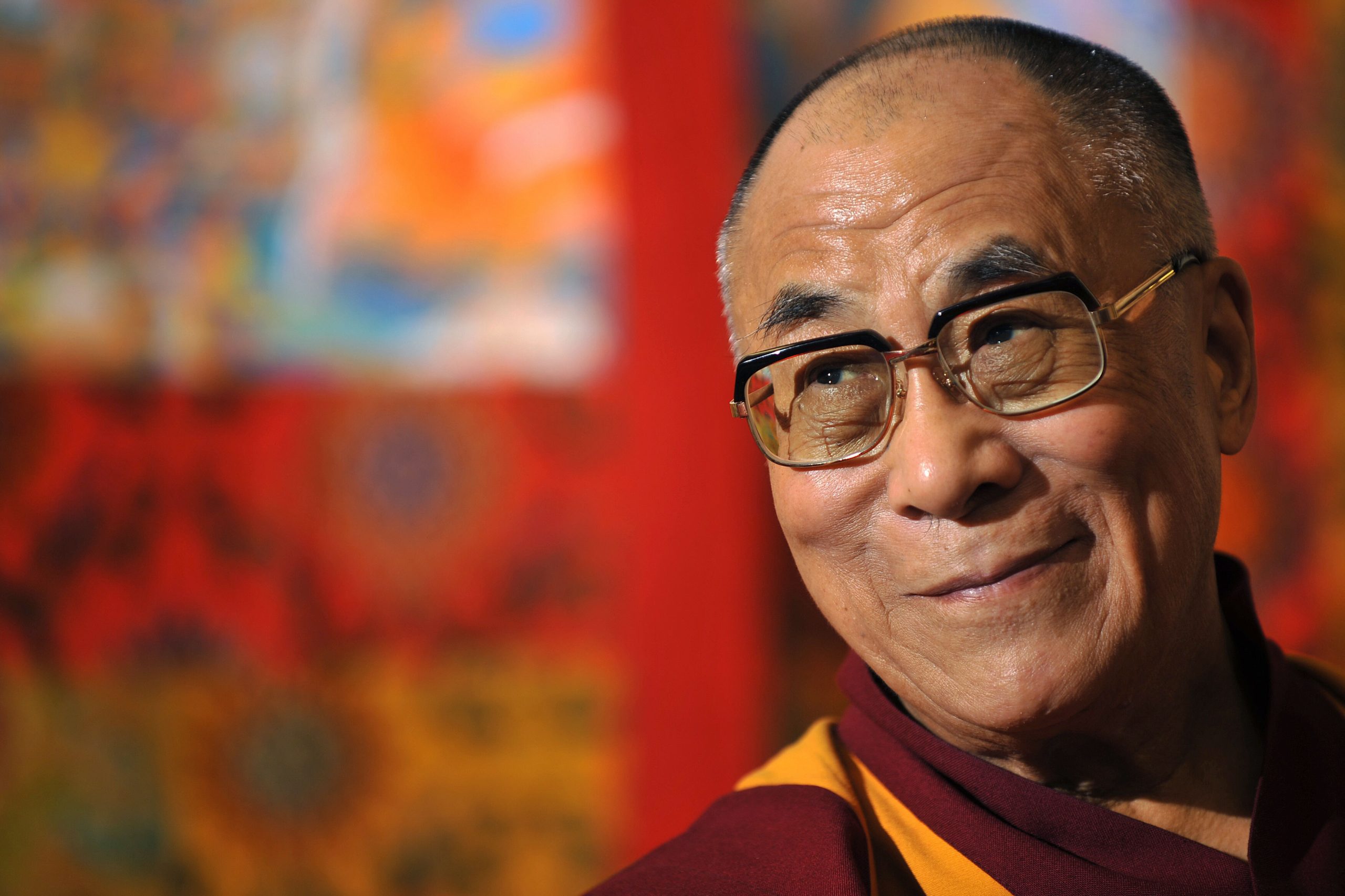
In Tibet, any sign of loyalty to the Dalai Lama can be met with arrests, lengthy sentences, torture and ‘re-education’ programmes. Despite 70 years of China’s oppressive occupation, Tibetans remain fiercely loyal to their spiritual leader.
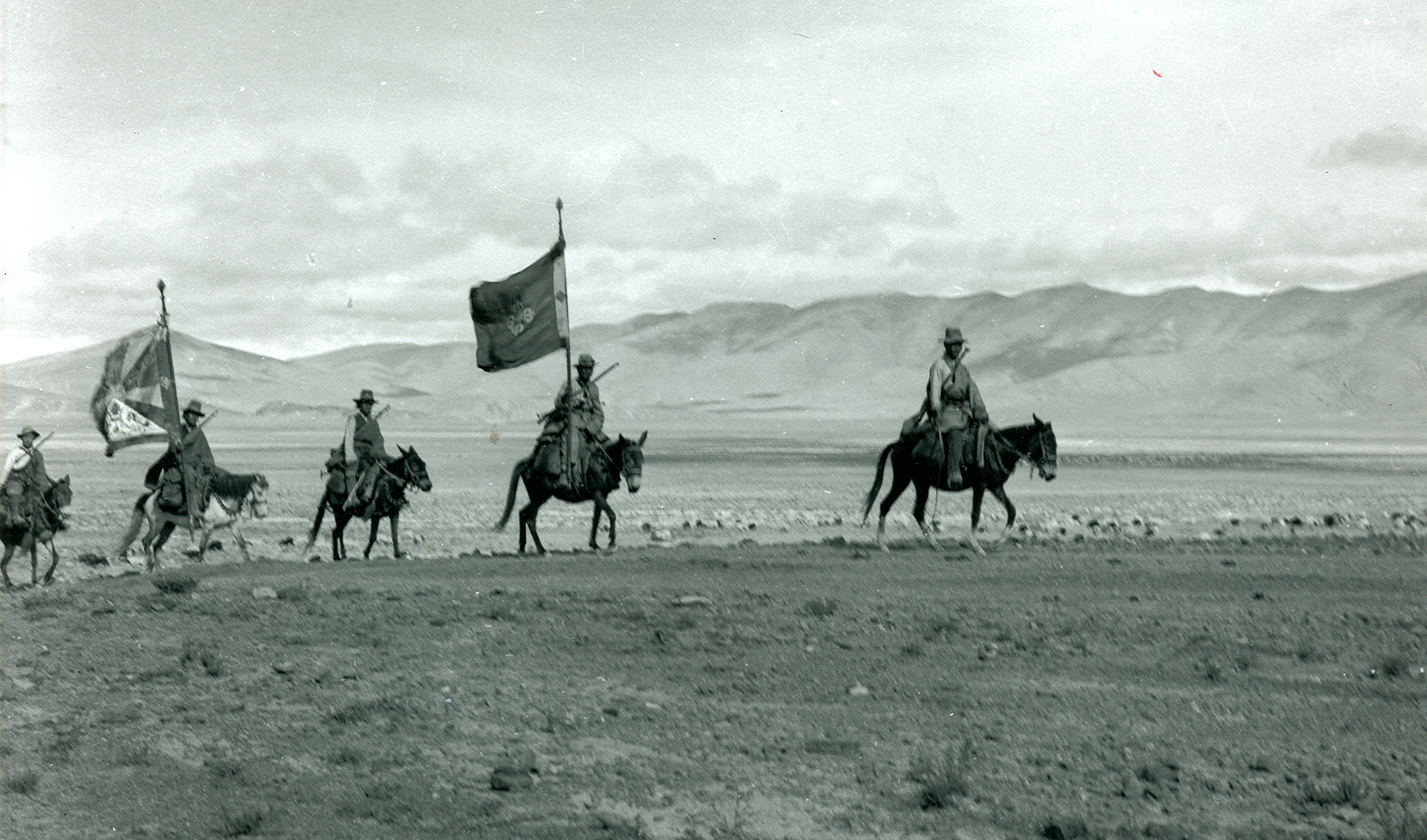
Tibet has a rich history as a nation, existing side-by-side with China for centuries. Browse through our timelines to learn more about Tibet's long history.
